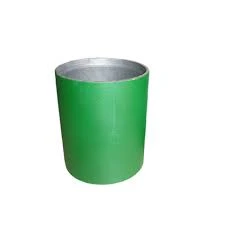- Afrikaans
- Albanian
- Amharic
- Arabic
- Armenian
- Azerbaijani
- Basque
- Belarusian
- Bengali
- Bosnian
- Bulgarian
- Catalan
- Cebuano
- Corsican
- Croatian
- Czech
- Danish
- Dutch
- English
- Esperanto
- Estonian
- Finnish
- French
- Frisian
- Galician
- Georgian
- German
- Greek
- Gujarati
- Haitian Creole
- hausa
- hawaiian
- Hebrew
- Hindi
- Miao
- Hungarian
- Icelandic
- igbo
- Indonesian
- irish
- Italian
- Japanese
- Javanese
- Kannada
- kazakh
- Khmer
- Rwandese
- Korean
- Kurdish
- Kyrgyz
- Lao
- Latin
- Latvian
- Lithuanian
- Luxembourgish
- Macedonian
- Malgashi
- Malay
- Malayalam
- Maltese
- Maori
- Marathi
- Mongolian
- Myanmar
- Nepali
- Norwegian
- Norwegian
- Occitan
- Pashto
- Persian
- Polish
- Portuguese
- Punjabi
- Romanian
- Russian
- Samoan
- Scottish Gaelic
- Serbian
- Sesotho
- Shona
- Sindhi
- Sinhala
- Slovak
- Slovenian
- Somali
- Spanish
- Sundanese
- Swahili
- Swedish
- Tagalog
- Tajik
- Tamil
- Tatar
- Telugu
- Thai
- Turkish
- Turkmen
- Ukrainian
- Urdu
- Uighur
- Uzbek
- Vietnamese
- Welsh
- Bantu
- Yiddish
- Yoruba
- Zulu
what is a bull plug used for
What is a Bull Plug Used For?
The term “bull plug” might sound unfamiliar to many, but in specific contexts, particularly in plumbing and industrial settings, it plays a crucial role. Bull plugs, also known in some contexts as blind plugs or bullhead plugs, are devices used to seal or close off the end of a pipe, fitting, or other equipment. Understanding their purpose, applications, and importance helps illustrate the broader picture of their role in various industries.
1. Definition and Design
A bull plug is typically a type of pipe fitting that provides a means to cap or seal the end of a piping system. They can be made from different materials, including metals like stainless steel, brass, or plastic, depending on the application and the pipe material they are meant to seal. The design of a bull plug often includes threads that allow for easy installation and removal. Additionally, they have a solid end to ensure a complete seal, preventing any substances from leaking out or entering the system.
2. Primary Functions
The primary function of a bull plug is to close off a pipeline. This closure can serve several purposes
- Maintenance In many industrial processes, maintenance tasks require systems to be shut down. Bull plugs allow workers to isolate sections of piping while maintenance or inspections are carried out, preventing the flow of fluids or gases. - Safety Sealing off open ends of pipes can help prevent accidents or unintended spills, contributing to the overall safety of the work environment.
- System Integrity Bull plugs help to maintain system integrity. By completely sealing a system, they help preserve the pressure and prevent contamination from outside elements, which is crucial in many applications such as oil and gas, water treatment, and chemical manufacturing.
3. Applications
Bull plugs are commonly used in various industries, including
what is a bull plug used for

- Oil and Gas In this sector, bull plugs are extensively used to seal pipes in drilling, processing, and transportation operations. They ensure that toxic or flammable substances do not leak, thus protecting workers and the environment.
- Water and Wastewater Management They are utilized to seal pipes in both potable water systems and wastewater facilities, preventing contamination and managing flow during repairs or upgrades.
- Manufacturing In manufacturing settings, bull plugs are used in various types of machinery and equipment where fluid or gas flow must be temporarily halted during maintenance.
- HVAC Systems In heating, ventilation, and air conditioning systems, bull plugs are often used to seal off unused ports in equipment or piping systems, helping to maintain system efficiency and prevent leaks.
4. Installation and Removal
Installing a bull plug is generally a straightforward process. It involves selecting the appropriate size and material for the specific application, ensuring compatibility with the existing pipe threads. Once the right plug is chosen, it can be screwed into the end of the pipe by hand or with a wrench, ensuring it is tight enough to create a proper seal without over-tightening, which could damage the threads.
When it comes time to remove the bull plug, the process is similar. A wrench can be used to unscrew the plug, making way for maintenance or modifications to the piping system. Regular inspection of bull plugs is crucial, as wear and tear can compromise their sealing ability over time.
5. Conclusion
In summary, a bull plug is an essential component in a wide array of industries, serving as a simple yet effective tool for sealing pipes and ensuring system safety and integrity. With various materials and designs available, they can be tailored to fit different application needs, from oil and gas to HVAC systems. As industries continue to grow and evolve, the importance of reliable sealing solutions like bull plugs will remain critical in maintaining efficient and safe operations. Understanding their functionality not only enhances our grasp of industrial systems but also underscores the importance of components that often go unnoticed yet play a critical role in the overall effectiveness of these systems.
-
Well Casing Extension Couplings – Applications and InstallationNewsJun.06,2025
-
Types of Crossover Subs in Drilling & CompletionNewsJun.06,2025
-
Key Features of High-Quality Tubing Pup JointsNewsJun.06,2025
-
Installation and Maintenance Tips for Steel Couplings for PipeNewsJun.06,2025
-
How to Select the Right Pup Joint for Oil & Gas OperationsNewsJun.06,2025
-
Applications of Stainless Steel Pipe CouplingsNewsJun.06,2025







